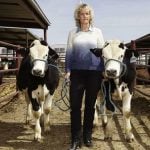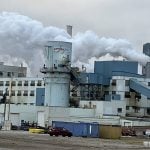A couple of major factors affect ROA for dairy. First it’s both a highly capital-and labour-intensive business, and both debt and labour costs have increased. Gross revenues increased steadily over the five years in the Farm Financial Survey, but not as much as the liabilities.Net farm income rose by $20,000 per farm but many just socked it against their loans.
“Based on what I’ve seen with the Profit Profiler program, after making principal payments, many dairymen do not draw a large cash amount out of the business,” says Bill Grexton, who manages CanWest DHI’s Profit Profiler, a benchmarking and forecasting program for the dairy sector. “I think this is because of debt obligations. Many of the dairy farmers I deal with draw less than what they would have to pay for the equivalent labour to do the labour component of the job they do.”
Read Also

Producers aren’t panicking over tariffs and trade threats
The Manitoba Canola Growers Association (MCGA) surveyed its members this spring to get a sense of how trade uncertainty was…
Average milk production for all cows in CanWest DHI increased about 130 litres from 2006 to 2008. In CanWest DHI’s Profit Profiler program, the midrange of total cost for cows and heifers is 62.7 per cent of milk revenue. However, the range between high-and low-performing farms is very wide.
Between 1996 and 2006, the cost of dairy quota in Ontario doubled from about $15,000 to about $30,000. In the last year, Ontario Dairy Farmer’s policy change has capped that at $25,000 per unit.
Almost half of dairy producers’ assets are tied up in quota, representing an average of $1.4 million per producer. As of 2006, $6.3 billion of the $13.8 billion in total dairy farm assets in Canada was in quota. About half of the value of quota was covered by debt.
However, this total asset value does not contribute to the net farm income of the farming operation.
For those using the Profit Profiler program, after all farm costs, including depreciation and interest, the middle-range farmers had a net income of about 20 per cent of total revenue. “This group had considerable debt, about $220 per hectolitre of milk sold,” says Grexton. “That 20 per cent is needed to pay for principal and reinvestment.”
Average price per litre depends on the month and the component mix of individual farms. However the average received for the herds with the Profit Profiler was $74.38 per hectolitre or $17.88 per kg fat sold.














